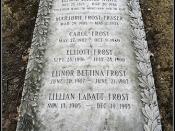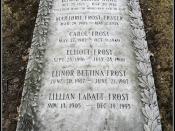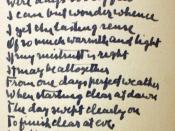Seen as one of the most notoriously misconstrued poems written by Frost, The Road Not Taken's reputation for confused analysis is merely a product of Frost's ability to infuse his feelings/emotions at the time of the poem, into the reader. As a literal translation, The Road Not Taken is a narrative in which the speaker, Frost, encounters the classic dilemma of which road to take at a fork in the road. In the end, Frost picks a road knowing that although both roads' conditions are identical, it is "doubtful if [he] should ever come back" (15. Frost) to experience The Road Not Taken. However, Frost ultimately created this poem as an example of the choices one must make in life and though the outcome might be bad, one should never regret their choices. The Road Not Taken is not as much an individual experience as a lesson in how to deal with life's infinite decisions before, during, and after they have been made.
Through Frost's depiction of both roads before and during his decision of which path to take, Frost's use of imagery is meant to transform his current impasse into a more general meaning of the decisions one makes in life. The first line of his poem illustrates a setting as "two roads [which] diverged in a yellow wood" (1. Frost), or more specifically he has chosen the setting of fall, a season which marks the transition/change of spring to winter. Frost's illustration of fall's transition is specifically meant as a parallel that demonstrates how the choices one makes along the road of life will follow with change/transition. However, after noting that each path "that morning equally lay" (11. Frost), Frost's only basis for his choice of path rested on his inability to observe what lay ahead...


